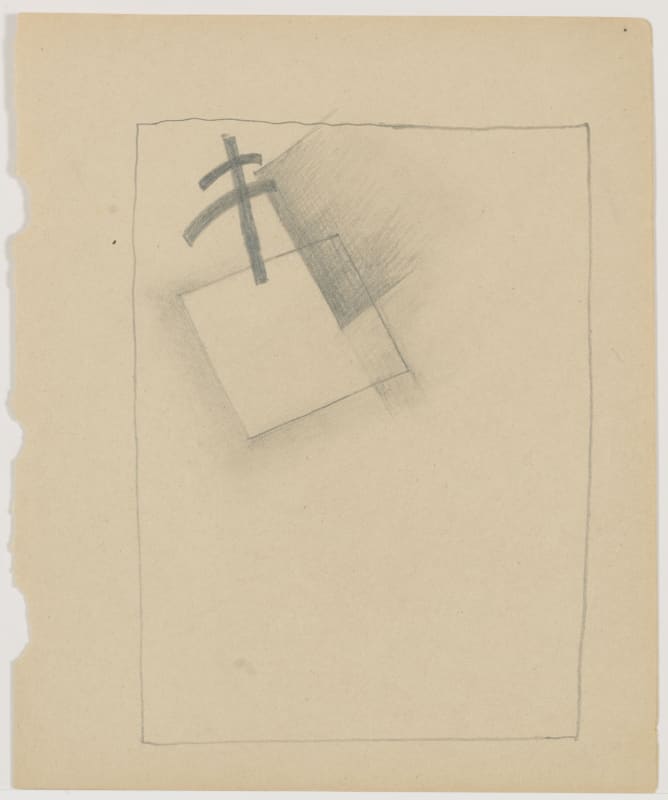Kasimir (Severinovich) Malevich was an important avant-garde artist whose pioneering work and writing had a profound influence on the development of non-objective, or abstract art, in the 20th century. Born in 1879 in Kyiv to an ethnic Polish family, his theory of Suprematism sought to develop a form of expression that moved as far as possible from the world of natural forms (objectivity) and subject matter in order to access "the supremacy of pure feeling" and spirituality.
Malevich quickly assimilated the movements of Impressionism, Symbolism and Fauvism, and after visiting Paris in 1912, Cubism. Gradually simplifying his style, he developed an approach with key works consisting of pure geometric forms and their relationships to one another, set against minimal grounds. His Black Square (1915), has become a celebrated icon of modernism, Malevich called this canvas the ‘zero of form’ as for him it marked the beginning of a new pictorial language based on purity of form and colour free from all associations with the material world. Composition: White on White (1918), a barely differentiated off-white square superimposed on an off-white ground, took his ideal of pure abstraction to its logical conclusion. In addition to his paintings, Malevich laid down his theories in writing, such as "From Cubism and Futurism to Suprematism" of 1915 and “The Non-Objective World: The Manifesto of Suprematism” in 1926.
Malevich's trajectory in many ways mirrored the tumult of the decades surrounding the October Revolution in 1917. In its immediate aftermath, vanguard movements such as Suprematism and Vladimir Tatlin's Constructivism were encouraged by Trotskyite factions in the government. Malevich held several prominent teaching positions and received a solo show at the Sixteenth State Exhibition in Moscow in 1919. His recognition spread to the West with solo exhibitions in Warsaw and Berlin in 1927. From 1928 to 1930, he taught at the Kyiv Art Institute, with Alexander Bogomazov, Victor Palmov, Vladimir Tatlin and published his articles in a Kharkiv magazine, Nova Generatsia (New Generation). However, the start of repression in Ukraine forced Malevich return to modern-day Saint Petersburg. From the early 1930s, modern art fell out of favour with the new government of Joseph Stalin. Malevich lost his teaching position, artworks and manuscripts were confiscated, and he was banned from making art.
After his death in 1935 at the age of only 56, Malevich’s art and his writing continued to influence contemporaries such as El Lissitzky, Lyubov Popova and Alexander Rodchenko, as well as generations of later abstract artists, such as Ad Reinhardt and the Minimalists. In 1936, the year after his death, he was celebrated in a major exhibition at the Museum of Modern Art, New York and he has continued to be the focus of important museum and public exhibitions around the world including the Guggenheim Museum, New York, in 1973 and the Stedelijk Museum, Amsterdam, Netherlands - which has a large collection of his work - in 1989. More recently the Tate Modern Gallery in London Malevich – A Revolutionary of Russian Art, 2014; Malevich in Focus, The Guggenheim Museum, New York, 2010; Kasimir Malevich & The Russian Avant Guard Stedelijk Museum, Amsterdam & Bundeskunsthalle, Bonn in 2013-14; Malevich – The Collection of the State Russian Museum St.Petersberg in Madrid, Barcelona, & Valencia in 1993; and in 1990, Kasimir Malevich 1878-1935, The Washington National Gallery of Art, The Armand Hammer Museum of Art, Los Angeles and the Metropolitan Museum of Art, New York.
